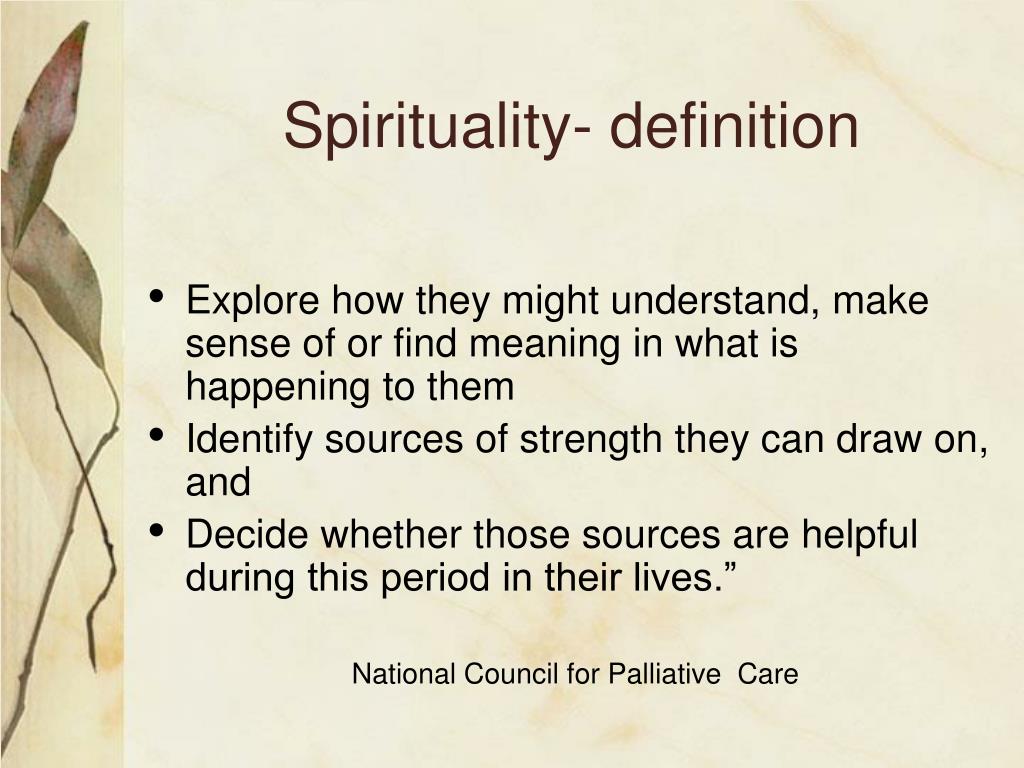
#SPIRITUAL DOM DEFINITION SERIES#
After being “introduced” to the neurotic and hysterical aspects of religion by the famous French neurologist Jean Charcot in the mid-1880s, Freud began to emphasize this in a widely read series of publications from 1907 through his death in 1939. This separation was encouraged by the psychiatrist Sigmund Freud. It was not until modern times that religion and psychiatry began to part paths.

Psychiatric hospitals that followed in the footsteps of Friends Asylum were the McLean Hospital (established in 1818 in Boston, and now associated with Harvard), the Bloomingdale Asylum (established in 1821 in New York), and the Hartford Retreat (established in 1824 in Connecticut)-all modeled after the York Retreat and implementing moral treatment as the dominant therapy. Established in Philadelphia by the Quakers in 1813, “Friends Hospital” (or Friends Asylum) became the first private institution in the United States dedicated solely to the care of those with mental illness.

Not long after this, the Quakers brought moral treatment to America, where it became the dominant form of psychiatric care in that country. In response to the abuses in mental hospitals, and precipitated by the death of a Quaker patient in New York asylum in England, an English merchant and devout Quaker named William Tuke began to promote a new form of treatment of the mentally ill called “moral treatment.” In 1796, he and the Quaker community in England established their own asylum known as the York Retreat. The hospital eventually became known as “bedlam” (from which comes the word used today to indicate a state of confusion and disarray). In later years, an admission fee (2 pence) was charged to the general public to observe the patients abusing themselves or other patients. Over the years, as secular authorities took control over the institution, the hospital became famous for its inhumane treatment of the mentally ill, who were often chained , dunked in water, or beaten as necessary to control them. Mary's was torn down and replaced by Bethlehem or Bethlem Hospital. Originally designed to house “distracted people,” this was Europe's (and perhaps the world's) first mental hospital. Mary of Bethlehem was built in London on the Thames River. In the American colonies, in particular, many of the clergy were also physicians-often as a second job that helped to supplement their meager income from church work.Ĭare for those with mental health problems in the West also had its roots within monasteries and religious communities.

For hundreds of years, in fact, religious institutions were responsible for licensing physicians to practice medicine. Throughout the Middle Ages and up through the French Revolution, physicians were often clergy. The first hospitals in the West for the care of the sick in the general population were built by religious organizations and staffed by religious orders. The history of religion, medicine, and healthcare in developed countries of the West, though, is a fascinating one. Only in recent times have these systems of healing been separated, and this separation has occurred largely in highly developed nations in many developing countries, there is little or no such separation. Religion, medicine, and healthcare have been related in one way or another in all population groups since the beginning of recorded history. Finally, I discuss what health professionals should do in light of these research findings and make recommendations in this regard.ġ. I then present a theoretical model explaining how R/S might influence physical health. Next, I review research on R/S and health behaviors such as physical activity, cigarette smoking, diet, and sexual practices, followed by a review of relationships between R/S and heart disease, hypertension, cerebrovascular disease, Alzheimer's disease and dementia, immune functions, endocrine functions, cancer, overall mortality, physical disability, pain, and somatic symptoms. I then explain how and why R/S might influence mental health.

Then I review research on R/S and mental health, examining relationships with both positive and negative mental health outcomes, where positive outcomes include well-being, happiness, hope, optimism, and gratefulness, and negative outcomes involve depression, suicide, anxiety, psychosis, substance abuse, delinquency/crime, marital instability, and personality traits (positive and negative). First, I provide a brief historical background to set the stage. It is based on a systematic review of original data-based quantitative research published in peer-reviewed journals between 18, including a few seminal articles published since 2010. This paper provides a concise but comprehensive review of research on religion/spirituality (R/S) and both mental health and physical health.


 0 kommentar(er)
0 kommentar(er)
